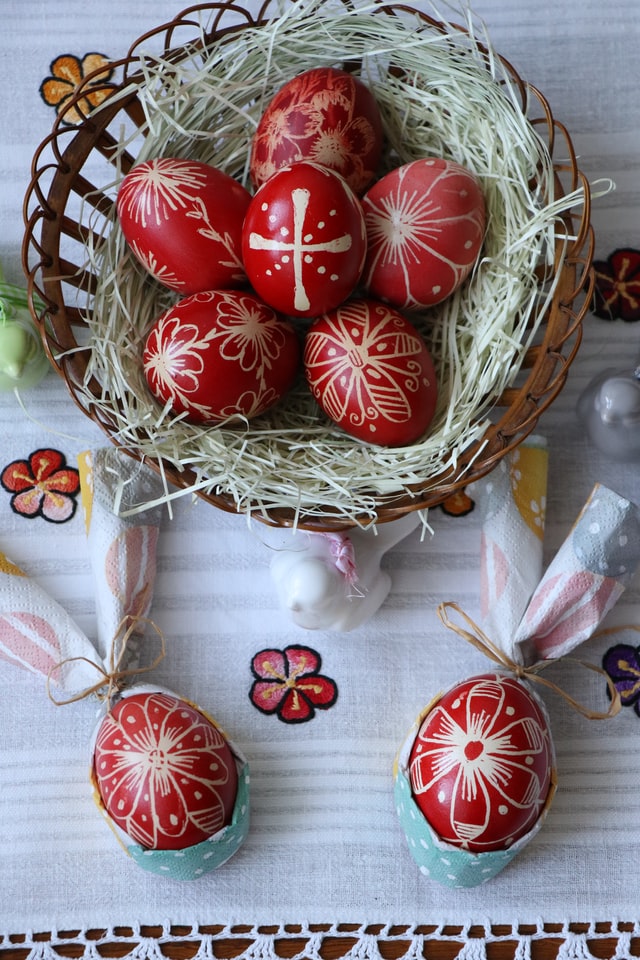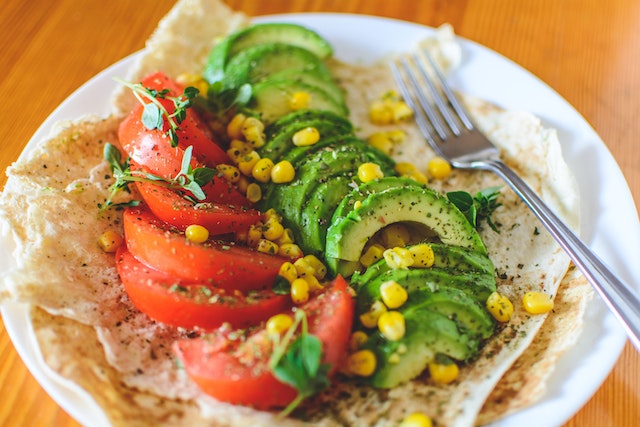Written by: Olivera Tolimir
All around the world, Christians celebrate Easter, so believers of the Serbian Orthodox Church are no exception. But have you ever wondered how do we celebrate Easter in Serbia?
While the main parts of Easter are the same among all Christians (remembering the resurrection of Jesus Christ after the crucifixion), customs and traditions vary. Here is your step-by-step guide to acting as a native during Easter in Serbia.

Easter or Easter?
Yes, you read the subtitle correctly. It makes more sense when translated into Serbian: Uskrs ili Vaskrs? It still makes no sense, does it?
It’s not nice to start a story about the greatest Christian holiday with a fight but it’s necessary to understand this silly argument because you’ll hear it at least once during Easter in Serbia. So, the thing is – some people like to argue about the correct way to write and pronounce the word Easter (in Serbian, of course). Some say it’s correct to say Vaskrs because the verb we use for the resurrection of Christ is vaskrsnuti, not uskrsnuti. Others disagree, saying that most people say Uskrs, so it has to be the correct way.
Well, who’s right? No one! Both versions are correct. The only difference is that Uskrs is in Serbian, and Vaskrs is in Church Slavonic,a language used during the liturgies. So, it’s fine to say both Uskrs and Vaskrs, whatever is easier for you to pronounce.
Now that we settled this disagreement in which both sides are equally right and wrong, let’s start with some real customs for Easter in Serbia!
Eggs Dyeing

Good Friday is the day we remember the crucifixion of Christ. Like most other Christians, Serbs also boil and dye Easter eggs on this day. Our grandmothers used onion skins to dye eggs red. Today, we usually buy colors in bags and use cute stickers. Individuals with a creative side use techniques such as decoupage or painting. What can we say? Just like everything else, Easter in Serbia is now more modern than ever!
Whatever method you choose, the crucial thing for Easter in Serbia is to color your first egg red. That egg is called čuvarkuća, which means guardian of the house. It’s the most significant Easter egg, and it stays in the house until the next-year Easter. It’s believed it protects the home and the family from sickness and other harm. A guardian egg from the previous year is sometimes put into a dish with water and some herbs.
Every family member is supposed to wash their face using that water to be healthy and happy. Sometimes, parents gently rub their children’s faces with čuvarkuća, so the little ones are healthy and sweet all year. In some villages, čuvarkuća is buried in the ground, so that the fields are fruitful. In modern times, sometimes it’s just carefully taken out of the house to make a place for the new home protector. The rest of the colorful eggs are put in baskets or bowls at the center of the table. A basket full of eggs is a crucial part of Easter in Serbia!
“Tucanje jajima” (Eggs hitting)
Tucanje jajima is an inevitable tradition during Easter in Serbia! It starts after the morning liturgy on Easter morning. Everyone brings a colored egg, and the competition begins! Competitors use their eggs to hit others, so the person whose egg cracks first loses. The one whose egg remains whole until the end is a winner. It’s always a loud event full of laughter, and children particularly enjoy it.
Believe it or not, there are even cheaters! Some people secretly bring an egg from another bird, whose eggs have a harder shell than the hens. Guineafowl eggs are usually used for this purpose. Because of this, when someone constantly wins, others become suspicious and investigate their egg! Even when a cheater is discovered, no one gets mad, everyone usually bursts into even louder laughter.
The competitors then eat the loser eggs, which fits the rule that the first food eaten after fasting should be an Easter egg. Everyone then goes to their homes to have a festive Easter lunch.

Traditional Easter Meals
While preparing for celebrating the rising of Jesus, Christians have Lent – a 40-day fasting period. Today, many people in Serbia don’t abide by these strict rules, but almost every Serb fasts on Good Friday. For most families in Serbia, the traditional Good Friday meal usually consists of fish soup, fried fish, beans, and potato salad. For Orthodox Christians, it’s important not to eat meat, milk, and eggs on fasting days. Those who strictly follow Lent, eat very little on Good Friday and don’t consume fish or oil. They eat raw or cooked food.
There are no strict lunch rules for Easter Sunday – we eat soup, some meat with garnish, a dessert, and a special round bread with a whole boiled egg in the middle. And, of course, Easter eggs!
Greetings
Special greetings are an unavoidable part of celebrating this Easter in Serbia. We don’t greet each other with a regular Good day nor do we say Happy Easter. It’s all combined in a greeting Hristos vaskrse or Hristos voskrese. It means Christ has risen. The answer is also specific: Vaistinu vaskrse or Voistinu voskrese. This means He has indeed risen. If you don’t feel comfortable saying these sentences, it’s all right to say, Srećan Uskrs or Srećan Vaskrs. It means Happy Easter and you’ll get a regular answer – Hvala (Thank you)! Two versions of both sentences exist for the same reason we have both Uskrs and Vaskrs.
Easter for the Dead
The first Monday after Easter is dedicated to the dead. During this time we think about our late beloved ones and go to the cemetery. We bring fresh grass and Easter eggs to their graves. Sometimes eggs are left there and sometimes given to the less fortunate, so they can enjoy the spirit of Easter, too.
What custom did you find most surprising? Which one is the most interesting?
If you’d like to learn more about Serbian customs and traditions, choose one of our great teachers and book your first Serbian class!



